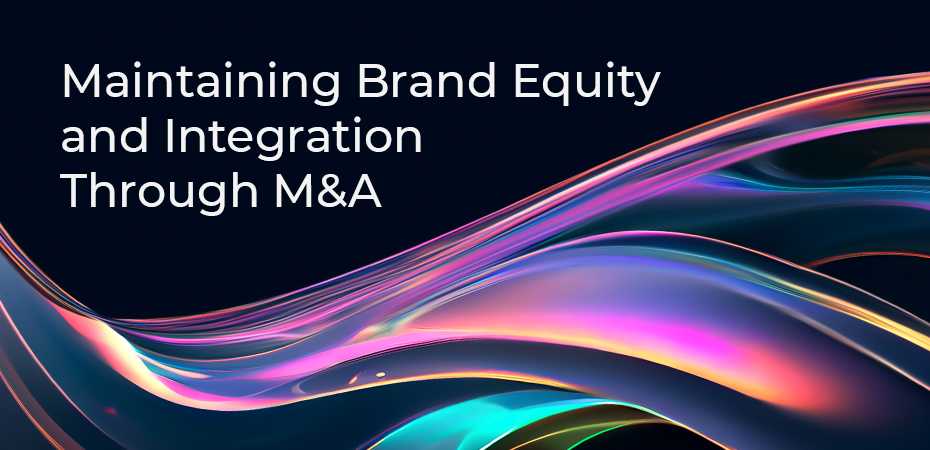June 20, 2025
| Article | Branding,
Content
How to Build Powerful Brand Messaging in a Changing Landscape
In today’s dynamic marketing environment, strong messaging isn’t just a “nice to have”—it’s a core business asset. That was the focus of REQ’s recent webinar, “Messaging in a Changing Landscape,” hosted by Elizabeth Shea, President of REQ, with insights from Amanda Wilson, Associate Director of Content, and Jackson Bowers, Manager, Brand and Content.
With decades of experience across PR, branding, and creative strategy, Amanda and Jackson brought real-world examples and creative insights into how brands can evolve their messaging to stay authentic, stand out from the crowd, and drive measurable results
The Foundations of Effective Messaging
Amanda emphasized that brand messaging is not just about describing a product—it’s about painting a vision of the world your brand helps create. Whether it’s promoting road safety or renewable energy, messaging at its best is both aspirational and grounded in real benefits.
Jackson added that messaging is more than a communications tool—it’s a brand’s North Star. It should resonate not just with external audiences, but internal teams as well, serving as a rallying cry that aligns everyone around shared values.
To build a foundation for strong brand messaging, organizations should plan to undertake an intentional process that includes understanding their audiences, values, mission, and brand promise, or value proposition. REQ’s team outlined how they analyze the competitive landscape and collaborate with clients to craft unique messaging that reaches intended audiences.
Why Messaging Matters Today
From the rise of AI to economic uncertainty and a competitive market place, today’s brand landscape is evolving quickly. Jackson illustrated how a failure to stay authentic can have real financial consequences, citing the backlash and market value loss Target experienced after rolling back its DEI initiatives. Messaging, he argued, has measurable business outcomes.
The conversation continued with a discussion about a question many organizations are grappling with: “Should I change my messaging?
Amanda introduced a compelling metaphor of a sailboat: messaging is your point of sail. You can adjust your sails (your tactics or language), but you must keep your direction steady. Authenticity, she noted, builds trust—arguably the most valuable brand currency today.
Testing Your Messaging Framework
Once a foundation is laid and brands are ready to launch their messaging, Amanda recommended first testing messaging with your target audiences using resources such as internal surveys, message testing tools, or even focus groups.
For existing messaging, Amanda suggested that organizations evaluate their messaging by asking whether the team is describing the brand or product using the same language. She also mentioned how REQ’s team closely tracks key performance metrics (KPIs) like signups, social media mentions, and earned media coverage which can indicate how a brand’s messaging is resonating externally. She praised REQ’s media and public relations leads for their meticulous tracking and results-focused mindset.
On Differentiation and Relevance
To remain relevant, brands must adapt—but carefully. Jackson emphasized staying consistent with your brand’s values while tweaking language or tone to suit different audiences. He noted that authenticity, boldness (on a spectrum), and human storytelling are what make a brand stand out—even in competitive or technical sectors.
The Role (and Limits) of AI & Importance of Human Storytellers
While AI can support brainstorming and light research, Amanda and Jackson cautioned against relying on it for building foundational messaging. They warned that messaging generated by AI can be formulaic, awkward, and lack emotional nuance. Amanda noted that human storytellers remain better at creating the long “arc” of a resonant story, as they have done for thousands of years, and real-world human experience and creativity remains essential to defining powerful messaging. Jackson noted that audiences may be able to sense when writing has been generated by a machine versus a team of humans brainstorming in a room. As Amanda put it, “The origin of the idea matters.”
The team also suggested that audiences—the people experiencing brands in the living world—remain the best source for messaging insights, so it’s smart to go straight to them. REQ underscored the importance of stakeholder interviews in the messaging process, not only to help clients garner internal buy-in and support from their full team but also to craft the most powerful and differentiated messaging.
Final Takeaways
Whether you're rethinking your brand message or starting from scratch, begin with your people—both inside and outside your organization. Build messaging rooted in authentic values, shaped by audience insights, and tested for impact.
The full webinar is available on REQ’s YouTube channel. If you’d like to take your brand messaging to the next level, connect with the REQ team to start the conversation.
